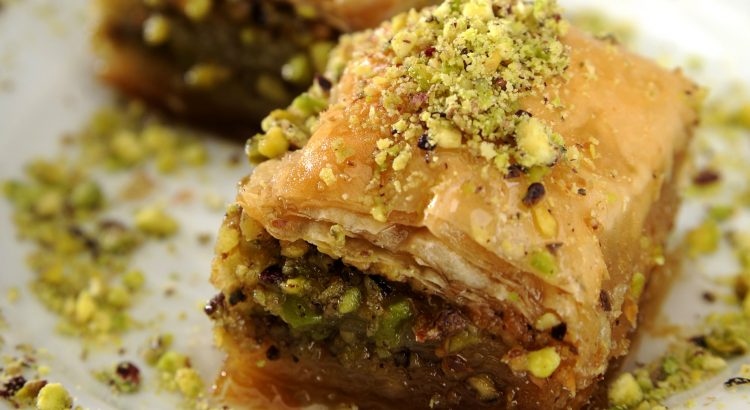Baklava, a mouthwatering delicacy with roots dating back centuries, is not only a dessert but also a cultural symbol that has captivated the taste buds of people around the world. This article delves into the rich history, intricate preparation, and diverse variations of baklava, exploring its significance in different cultures and societies.
Historical Origins: The origins of baklava can be traced to the ancient Middle East, where it was considered a luxurious treat fit for royalty. Initially known as “Layali Lubnan,” this dessert was crafted by layering thin sheets of dough and honey, creating a symphony of textures and flavors. Over time, baklava’s popularity spread along trade routes, adapting to local ingredients and techniques in regions such as the Ottoman Empire, Persia, and the Mediterranean.
Artisanal Craftsmanship: Central to baklava’s allure is the intricate craftsmanship required for its creation. The delicate balance of thin layers of phyllo dough, expertly brushed with clarified butter, is combined with layers of finely chopped nuts – typically pistachios, walnuts, or almonds – and a blend of aromatic spices. Each layer is meticulously placed, contributing to the dessert’s distinct flakiness and decadence.
Global Variations: As baklava journeyed across borders, it evolved to encompass a diverse array of regional variations. Greek baklava features cinnamon and cloves, while Turkish versions often incorporate a higher nut-to-dough ratio. In Lebanon and Syria, rosewater and orange blossom water are employed for a fragrant twist, and in Iran, saffron and cardamom infuse their version with a unique character. These variations highlight the dynamic nature of baklava as it melds with different culinary traditions.
Cultural Significance: Beyond its culinary appeal, baklava holds cultural significance in various societies. In many Middle Eastern cultures, baklava is central to festive occasions and celebrations, symbolizing generosity, prosperity, and togetherness. Its preparation often involves family and community gatherings, fostering a sense of unity and tradition.
Modern Adaptations: In the modern culinary landscape, baklava has not remained static. Innovative chefs and home cooks have experimented with new fillings, presentation styles, and even fusion recipes that blend baklava with other cuisines. These adaptations keep the essence of baklava alive while allowing it to appeal to evolving tastes and preferences.
Conclusion: Baklava is more than just a dessert; it’s a testament to the interconnectedness of cultures and the artistry of culinary traditions. Its journey from ancient origins to global popularity is a reflection of how food can transcend borders, bringing people together through shared flavors and experiences. As we savor each flaky layer of this exquisite treat, we also savor the history and craftsmanship that make baklava a truly timeless indulgence.





